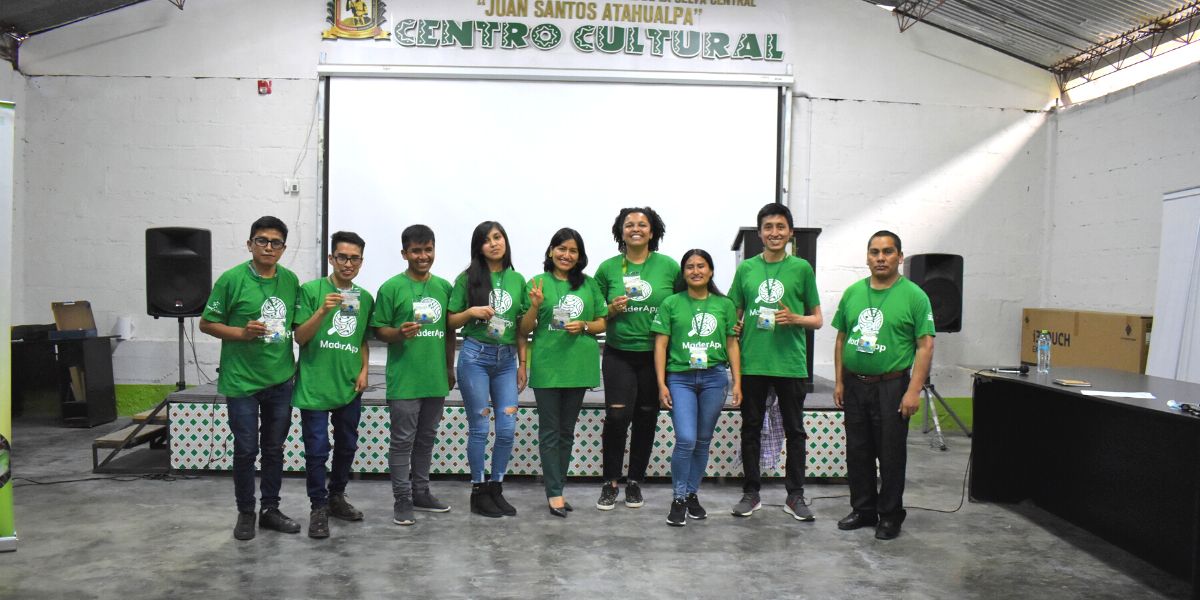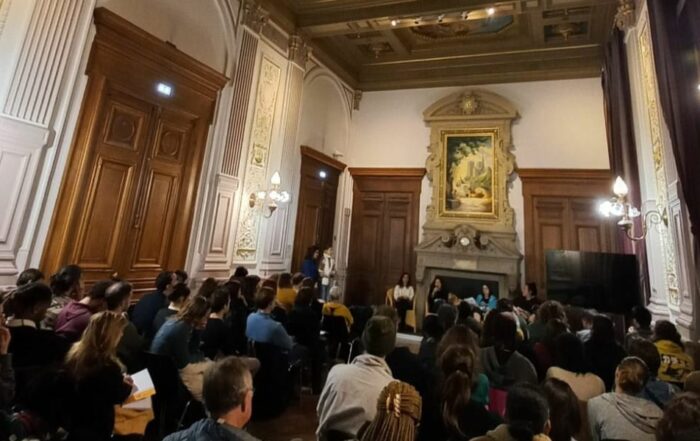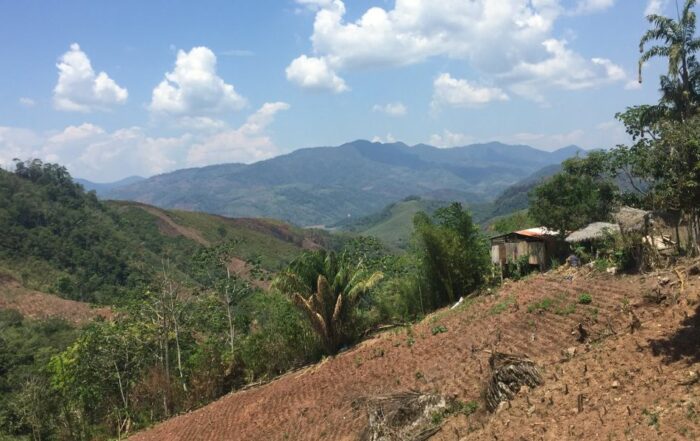At the end of May 2022 in the auditorium of the Universidad Nacional Intercultural de la Selva Central Juan Santos Atahualpa de La Merced (Chanchamayo, Junin), the research team of the Universidad Continental (Huancayo, Junín) officially presented their research work: “MaderApp: A mobile application for automatic and real-time recognition of commercial timber species to combat illegal logging in Selva Central” led by Dr. Mario Tommasiello Filho.
The event was attended by all the authorities of the Technical Forestry and Wildlife Administrations (ATFFS) of Selva Central, headed by Mr. Javier Enrique Balbín. Rodolfo Vásquez Martínez, director of the Botanical Garden of Missouri – Peru, his wife Blga. Rocio Rojas Gonzáles (researcher in vascular plant taxonomy) and the Envol Vert de Pichanaki team (local coordinator and a volunteer).
All this research was developed in several stages:
![[AGROCAFE] MADERAPP-APLICATION_MAY2022_O.VIDAL](https://envol-vert.org/wp-content/uploads/2022/07/AGROCAFE-MADERAPP-APLICATION_MAY2022_O.VIDAL_-600x383.jpg)
This research project is one of the pioneers in Peru in developing a prototype for wood recognition, through a cross section of the wood and by means of its macroscopic anatomical characteristics. A multidisciplinary research team, as well as public and private institutions participated in this project. Such is the case of Envol Vert Peru that, thanks to the conservation of forest species in the plots of our participants, the research team was able to collect important information for the identification of species.
This motivates us to continue working with more impetus because thanks to an inter-institutional collaboration it is possible to develop this type of research of great international impact for the conservation of forests.
At the end of May 2022 in the auditorium of the Universidad Nacional Intercultural de la Selva Central Juan Santos Atahualpa de La Merced (Chanchamayo, Junin), the research team of the Universidad Continental (Huancayo, Junín) officially presented their research work: “MaderApp: A mobile application for automatic and real-time recognition of commercial timber species to combat illegal logging in Selva Central” led by Dr. Mario Tommasiello Filho.
The event was attended by all the authorities of the Technical Forestry and Wildlife Administrations (ATFFS) of Selva Central, headed by Mr. Javier Enrique Balbín. Rodolfo Vásquez Martínez, director of the Botanical Garden of Missouri – Peru, his wife Blga. Rocio Rojas Gonzáles (researcher in vascular plant taxonomy) and the Envol Vert de Pichanaki team (local coordinator and a volunteer).
All this research was developed in several stages:
![[AGROCAFE] MADERAPP-APLICATION_MAY2022_O.VIDAL](https://envol-vert.org/wp-content/uploads/2022/07/AGROCAFE-MADERAPP-APLICATION_MAY2022_O.VIDAL_-600x383.jpg)
This research project is one of the pioneers in Peru in developing a prototype for wood recognition, through a cross section of the wood and by means of its macroscopic anatomical characteristics. A multidisciplinary research team, as well as public and private institutions participated in this project. Such is the case of Envol Vert Peru that, thanks to the conservation of forest species in the plots of our participants, the research team was able to collect important information for the identification of species.
This motivates us to continue working with more impetus because thanks to an inter-institutional collaboration it is possible to develop this type of research of great international impact for the conservation of forests.






